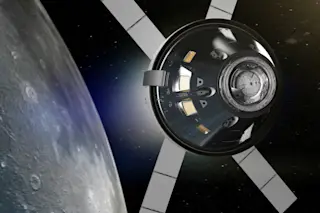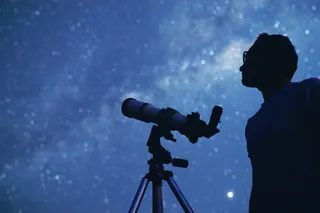When NASA’s towering Space Launch System rocket launches in November 2024 (if all goes as planned), the Artemis 2 mission will carry four astronauts and a cutting edge communications device.
For more than a decade, the space agency has worked to develop a new method of communication based on infrared lasers, to replace its old, bulky radio systems, which transmit at a fraction of the rate. Once in space, the “O2O,” the Orion Artemis 2 Optical Communication System will be tested at several points during the mission to transmit videos, images, procedures, flight plans and voice communications between Orion and Earth.
Artemis 2 won’t land on the moon – the Orion spacecraft is capable of atmospheric reentry and splashdown on an Earthly ocean, but not touchdown on solid land. It’ll fly around the moon, reaching 40,000 miles away from it, while beaming gigabytes of moon footage back to the Earth. ...














